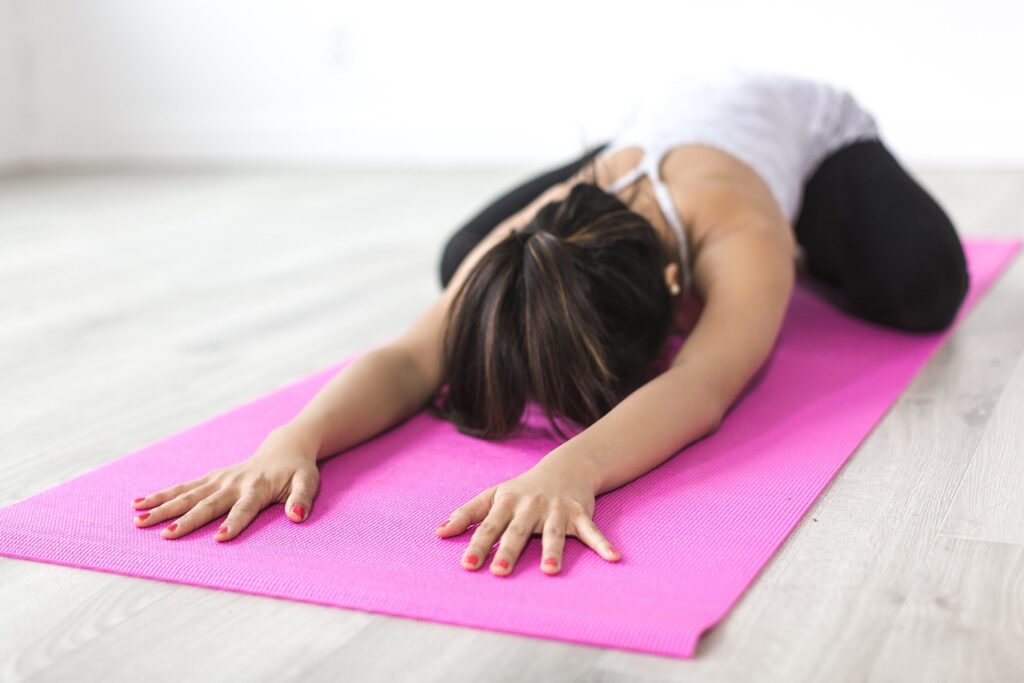Different Ways To Stretch and Improve Flexibility

Flexibility is an important piece of overall fitness and plays a crucial role in preventing injuries, improving posture, and enhancing athletic performance. Stretching is a useful practice to helps maintain and improve flexibility. This article will discuss the various forms of stretches, exploring their benefits, different techniques, and when to incorporate them into your fitness routine to improve your overall well-being.
Static Stretching
Static stretching is easily the most well-known and commonly performed type of stretching. It involves lengthening a muscle to the point of mild discomfort and holding the position for an extended period, usually anywhere between 15-60 seconds. This form of stretching is normally used during cool-downs to improve overall flexibility.
Benefits:
- Increases flexibility and range of motion.
- Helps improve muscle and joint elasticity.
- Promotes relaxation and reduces muscle tension.
Technique:
- Choose a muscle group to stretch.
- Move into a comfortable position to elongate the muscle.
- Hold the stretch for the desired duration.
- Repeat on the other side if applicable.
Example: Hamstring stretch, Quadriceps stretch, Calf stretch.
Dynamic Stretching
Dynamic stretching involves controlled, repetitive movements that mimic the activity you’re about to perform. Unlike static stretching, dynamic stretches are not held for an extended period. This type of stretch is particularly beneficial when part of a warm-up routine to increase blood flow, flexibility, and joint mobility.
Benefits:
- Improves circulation and warms up the muscles.
- Enhances flexibility and range of motion.
- Activates the nervous system for better muscle coordination.
Technique:
- Perform controlled, fluid movements through a full range of motion.
- Focus on engaging the muscles involved in the upcoming activity.
- Dynamic stretches should be smooth and controlled, not forced or jerky.
Example: Leg swings, Arm circles, Walking lunges.
PNF Stretching (Proprioceptive Neuromuscular Facilitation)
PNF stretching is an advanced form of flexibility training that involves a combination of stretching and contracting specific muscle groups. It is often performed with a partner, and it incorporates the body’s natural reflexes to improve flexibility rapidly.
Benefits:
- Rapid gains in flexibility.
- Increased neuromuscular coordination.
- Effective for overcoming flexibility plateaus.
Technique:
- Passively stretch the muscle to its limit.
- Isometrically contract the muscle against resistance (partner or an immovable object) for 5-10 seconds.
- Relax and passively stretch the muscle further during the relaxation phase.
- Repeat the process 2-4 times.
Example: Partner-assisted hamstring stretch.
Ballistic Stretching
Ballistic stretching is performed through bouncing or jerking movements to force a muscle into an extended range of motion. While it can be effective in improving flexibility, it comes with a higher risk of injury, and caution should be exercised, especially for individuals with tight muscles or joint issues.
Benefits:
- May improve dynamic flexibility.
- Can enhance performance in activities requiring ballistic movements.
Caution:
- High risk of injury.
- Not recommended for beginners or those with pre-existing injuries.
Example: Bouncing toe touches.
Active Isolated Stretching (AIS)
Active Isolated Stretching is a dynamic stretching technique that is performed by actively contracting one muscle group to relax and lengthen the opposing muscle group. Each stretch is held for only about 1-2 seconds, creating a more controlled and focused approach to flexibility training.
Benefits:
- Improves flexibility without the risk of overstretching.
- Enhances circulation and range of motion.
Technique:
- Isolate the muscle to be stretched.
- Actively contract the opposing muscle group.
- Hold the stretch for 1-2 seconds.
- Repeat the process 8-10 times for each muscle group.
Example: Active isolated quadriceps stretch.
Yoga and Pilates
Yoga and Pilates are an all-around approach to flexibility and strength that incorporate various stretching techniques. These practices often blend static and dynamic stretches with breath control and mindfulness, promoting overall physical and mental wellness.
Benefits:
- Improves flexibility, balance, and core strength.
- Enhances body awareness and mindfulness.
- Can be adapted to different fitness levels.
Technique:
- Follow guided poses or movements that emphasize stretching.
- Focus on controlled breathing and body awareness.
- Modify poses as needed based on individual flexibility levels.
Example: Downward-facing dog (Yoga), The Hundred (Pilates).
When to Stretch
- Pre-Workout: Dynamic stretching is a perfect stretch to perform during the warm-up phase of your workout routine. It prepares the muscles for activity, increases blood flow, and enhances joint mobility.
- Post-Workout: Both static and PNF stretching can be used during the cool-down phase after a workout. This helps relax muscles, reduce muscle tension, and improve overall flexibility.
- Regular Flexibility Training: Include static and dynamic stretches into your regular fitness routine, whether it’s a dedicated flexibility session or part of your strength training regimen.
Conclusion
Incorporating various forms of stretches into your fitness routine is an extremely useful way to help maintain and improve flexibility. Whether you prefer the usual static stretches, dynamic movements, or more advanced techniques like PNF stretching, finding the right combination can enhance your overall fitness, reduce the risk of injuries, and contribute to your physical well-being. Test out the different forms of stretches, listen to your body, and make flexibility training a staple in any workout routine.